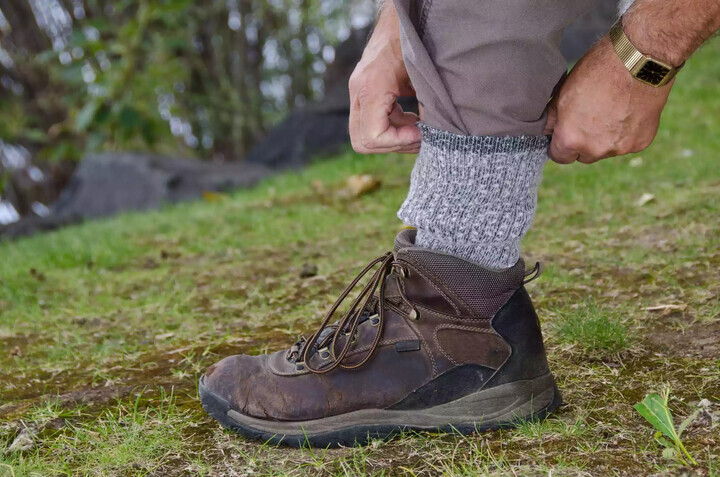Chiggers are mites in their immature stage that might lurk in your backyard in tall grass, weed patches, and humid spots underneath trees. They might be anywhere you venture outdoors where there’s brush or thicket combined with moisture, such as along stream banks.
Chiggers cause an itchy rash that can last for several days. There are ways how you can protect yourself from getting chiggers and control them in your back yard.
If you have chiggers, against popular belief, note that they don’t burrow into your skin and, unlike mosquitoes and ticks, chiggers in the United States don’t transmit infectious diseases.
What Are Chiggers?
Chiggers, also known as red bugs, harvest lice, or harvest mites, are the larvae of certain mites of the Trombiculidae family. Like spiders and ticks, chiggers are arachnids. The red-colored larvae of chiggers are so small—only 1/120 to 1/150 of an inch—that you cannot see them with the naked eye.
After the mite eggs hatch in the spring, the fast-moving six-legged larvae climb onto low-growing vegetation and wait for suitable hosts to come along: cats, dogs, rodents, reptiles, birds, and humans.
The larvae attach to the skin of their host, preferably soft skin, and inject their saliva into it. The digestive enzymes in the saliva liquefies the host’s skin cells, which causes the typical chigger rash and intense itching that starts three to six hours after the chiggers have attached to the skin. If they are not removed, chiggers remain on the human skin for about four days.
When they are done feeding, the chiggers drop off. In their later stages as nymphs and adults, chiggers do not prey on hosts any longer.
In cooler climates, late spring and early summer is prime time for chiggers but in warmer, humid climates, chigger larvae can be present year-round, as they produce up to five generations per year.
How to Prevent Chiggers
You can control chiggers by making your yard less attractive for them. Chiggers like moist areas with dense vegetation. Prune your trees and shrubs to let in more sunlight and decrease humidity. Regularly mow your lawn and mow closely around trees, shrubs, and along edges between garden beds and woody or naturalized areas.
Rodents and other small mammals are main hosts for chiggers. By removing piles of debris and brush, you discourage these animals from settling down in your yard and bringing chiggers with them.
As a gardener who is aware of the need for more biodiversity in our back yards you might wonder how chigger prevention and naturalized landscapes go together. They do! Controlling chiggers does not mean that everything has to be manicured. You can still have your pollinator gardens and meadow-style beds, and provide shelter for desirable wildlife. Just like with ticks, take appropriate protective measures.
The common recommendation is to avoid brushing against vegetation, which is simply not practical for gardeners. But don’t work in tall grass, overgrown areas, and brush without proper protective clothing.

Wear long sleeves and pants and treat your clothing with insect repellent. Check the label if the product effectively repels chiggers. Insect repellents containing DEET do, and there are also DEET-free alternatives. Wear boots and tuck the pant legs into them.
Shower immediately with soap when you get back indoors because chiggers don’t attach to the skin right away, they wander around first.
Don’t wear clothing again after being in locations where chiggers might be present. Launder it on a hot washing cycle.
Unless you have a place in your yard that is infested with chiggers in consecutive years, spraying insecticides is not a good solution. Chiggers overwinter in the soil so if you have a chigger hot spot, you might consider spraying the low-growing vegetation with products containing bifenthrin, carbaryl, cyhalothrin, or permethrin for a one-time application in late April or May when the chiggers hatch. Keep in mind that broad-spectrum insecticides also kill beneficial insects and should only be the last resort. Like with all chemicals, read the label carefully.

How to Treat Chigger Bites
Chigger bites cause intense itching, so although you cannot see them, you'll know after a few hours you have been bitten. The bites cause red welts with a white, hard spot in the center, which distinguishes them from mosquito bites.
The first step is to wash the affected skin areas thoroughly with soap and water to remove the mites.
Then apply OTC remedies: antiseptic cream to clean the area, and anti-itch cream or lotion such as hydrocortisone or calamine. In addition, you can take oral OTC antihistamines.
Cold compresses can also relief the itching. Hot water, such as hot bath or a shower, on the other hand, will only increase the itching.
The chigger bites will subside after a week or two without any long-term effects. Scratching however might lead to skin infections. If any of the above measures do not relieve the itching, your physician might prescribe a prescription-strength steroid cream.